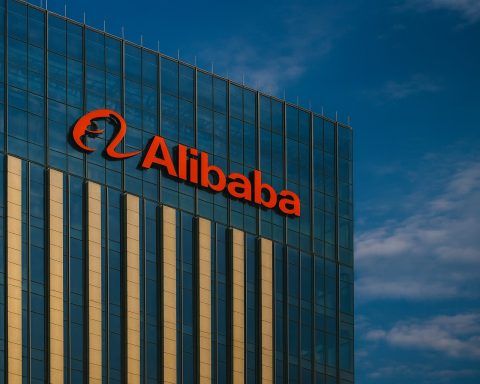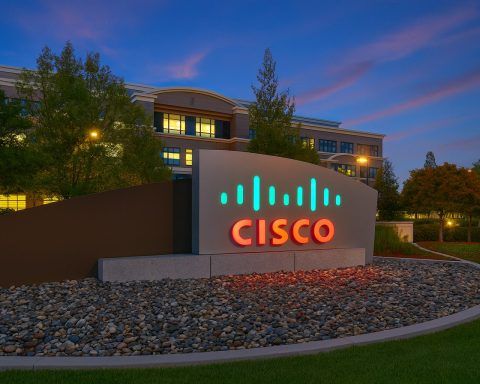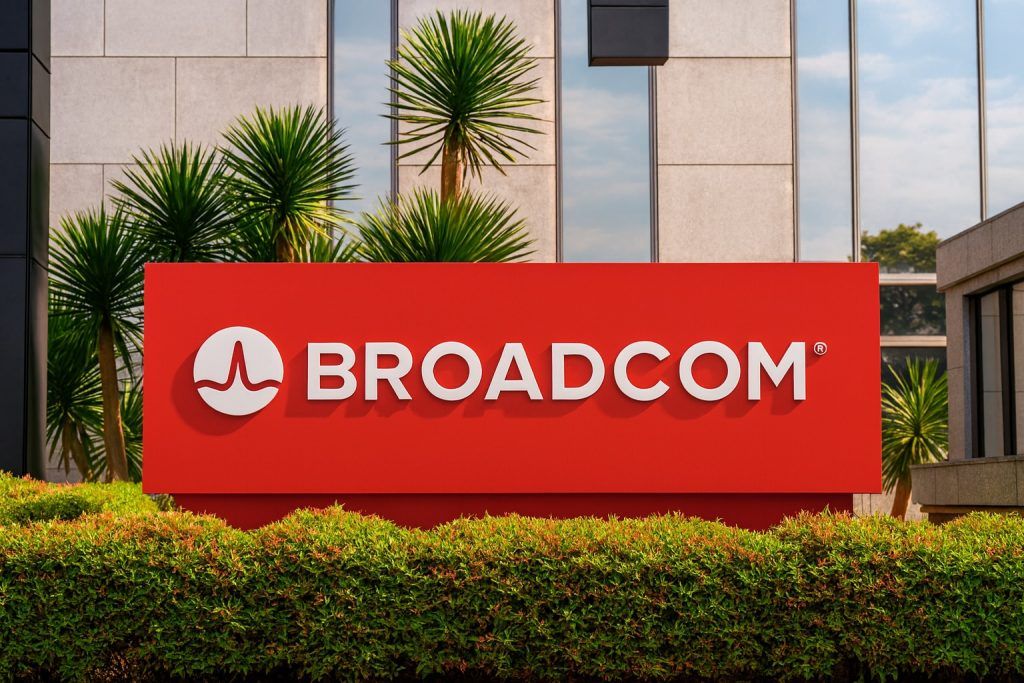Microsoft stock (NASDAQ: MSFT) shook off early weakness on Friday and finished the session solidly higher as investors digested a fresh Wall Street upgrade, sweeping AI infrastructure announcements, and new regulatory and governance headlines tied to the company.
As of the U.S. market close on November 14, 2025 (after 4:00 p.m. ET), Microsoft shares were trading a little above $510 per share, up roughly 1.3%–1.4% from Thursday’s close near $503.29. That puts MSFT about 8% below its 52‑week high around $555 and well above its 52‑week low near $345, with a market value in the $3.7–$3.8 trillion range. [1]
In early after‑hours trading, the stock was roughly flat around the $510 level, suggesting no major post‑close shock but a market still on edge ahead of next week’s key AI catalyst: Nvidia’s earnings. [2]
Microsoft stock price today: MSFT outperforms a mixed market
Friday was a volatile day for U.S. equities. All three major indexes were down more than 1% intraday before dip‑buyers stepped back in. By the close, the S&P 500 finished essentially flat, the Dow Jones Industrial Average slipped around 0.7%, and the Nasdaq Composite managed a small gain of roughly 0.1%. [3]
Against that backdrop, Microsoft outperformed:
- Close (approx.): just above $510 per share
- Previous close: about $503.29
- Daily gain: ≈ +1.3%–1.4%
- Intraday range: roughly $497 to $512
- Volume: around 20–21 million shares, close to its long‑run average daily volume of about 22.3 million [4]
On a longer view:
- 52‑week range: $344.79 (low) – $555.45 (high) [5]
- Year‑to‑date performance: roughly +20–21% in 2025, with about +19% over the past 12 months [6]
- Valuation: trailing P/E in the mid‑30s (around 36x–37x earnings), implying a premium to the broader market but still in line with recent AI‑fueled multiples for megacap tech. [7]
The move higher came even as investors wrestled with fading odds of a Federal Reserve rate cut in December and nagging concerns that valuations across AI leaders might be running hot. Reuters highlighted that Nvidia, Microsoft and other AI‑linked names bounced back and helped stabilize Wall Street after an early selloff tied to rate and valuation worries. [8]
Big catalyst: Baird initiates Microsoft at Outperform with a $600 price target
The day’s most notable stock‑specific catalyst was a new bullish initiation from Baird. The brokerage started coverage of Microsoft with an Outperform rating and a $600 price target, implying roughly high‑teens upside from current levels. [9]
Key points from Baird’s research:
- Microsoft is “leading the AI revolution” through a full stack that spans core infrastructure, applications, and its partnership with OpenAI. [10]
- The firm sees Microsoft’s AI‑driven cloud business sustaining double‑digit revenue growth, even at its enormous scale, supported by strong demand for Azure and AI services.
- In Microsoft’s latest reported quarter (fiscal Q1 2026), Baird highlighted:
- Total revenue up about 18% year over year to around $77.7 billion
- Azure revenue up roughly 40%
- Cloud revenue representing ~60% of total sales, growing around 25% in constant currency
- An impressive 49% operating margin and ~33% free‑cash‑flow margin, underscoring Microsoft’s profitability even as it ramps AI investment [11]
Baird does acknowledge the huge capital expenditure ramp required to fund the AI build‑out, projecting capex rising from roughly $88 billion in fiscal 2025 to about $143 billion in 2026. Even so, the firm models around $74 billion in free cash flow in fiscal 2026, arguing that Microsoft’s margins and balance sheet can absorb the spending. [12]
On valuation, Baird pegs MSFT at roughly 29x its own 2026 EPS estimate—a premium to the market but below the stock’s recent peaks. Combined with Microsoft’s growth profile, they see the risk‑reward as attractive. [13]
Other sources tally consensus Wall Street sentiment as “Strong Buy”, with an average 12‑month price target in the low‑to‑mid $630s, slightly above Baird’s $600 but broadly consistent with the AI‑driven bull case. [14]
AI “superfactory” and massive data‑center build‑out
A major narrative underpinning Microsoft’s valuation—and Friday’s media coverage—is its AI infrastructure strategy.
Fairwater and the Azure AI “superfactory”
On November 12, Microsoft published an in‑depth blog from Scott Guthrie, EVP of Cloud + AI, detailing “Infinite scale: The architecture behind the Azure AI superfactory.” The company formally unveiled a new Fairwater AI datacenter site in Atlanta, Georgia, connected to its first Fairwater site in Wisconsin and its broader Azure footprint. [15]
Highlights from Microsoft’s own description:
- Fairwater sites are purpose‑built AI datacenters designed to operate as components of a “planet‑scale AI superfactory”, rather than as traditional multi‑tenant cloud facilities.
- Each site packs an extremely dense fleet of Nvidia Blackwell GPUs (GB200/GB300), with up to 72 GPUs per rack and extensive NVLink interconnects, delivering hundreds of thousands of GPUs on a single flat network. [16]
- A custom AI WAN backbone links sites across the U.S., supported by more than 120,000 miles of new fiber, letting Microsoft shift workloads dynamically and maximize overall GPU utilization. [17]
- Advanced liquid cooling and a two‑story data‑center design aim to push energy efficiency and compute density while respecting resource constraints and sustainability targets. [18]
An English‑language report from IDNFinancials today framed the effort as “the world’s first planet‑scale AI super factory,” noting that Microsoft has now formally connected its Wisconsin and Atlanta Fairwater facilities via high‑speed fiber so they behave like a single massive AI system. Each Fairwater center hosts hundreds of thousands of Nvidia GPUs, and the combined complex is expected to train and run frontier models from OpenAI, Mistral, xAI, and Microsoft’s own AI efforts. [19]
Anthropic–Microsoft data‑center projects
A separate Associated Press report, republished by Daily Commercial News, underlined just how aggressive the AI infrastructure build‑out has become. Anthropic announced a $50 billion investment in new data centers in Texas and New York, while Microsoft confirmed a new Atlanta‑area data center branded Fairwater 2 that will act as part of a “massive supercomputer” for AI workloads using hundreds of thousands of Nvidia chips. [20]
The article highlighted concerns around power consumption, local electricity prices, and fears of an AI investment bubble, but also underscored that hyperscalers like Microsoft are not slowing their build‑out of AI capacity. [21]
Pricing shift: from “per user” to “per agent”
Another storyline influencing how investors think about Microsoft’s long‑term earnings power is a potential transformation in software pricing.
In a recent appearance on the Dwarkesh podcast, covered by Business Insider, CEO Satya Nadella said Microsoft is rethinking its business model as AI agents become embedded in everyday work. Rather than charging purely “per user”, Microsoft is “thinking about per agent”—in other words, AI systems with their own identity and workload may effectively become new paid “seats.” [22]
Key takeaways:
- Nadella framed Microsoft’s evolving business as “an infrastructure business in support of agents doing work,” not just tools for human end‑users. [23]
- Per‑agent or usage‑based pricing could allow Microsoft to capture more value as enterprises deploy fleets of AI coworkers that run 24/7, consume compute, and rely on Microsoft’s identity, security and data‑governance stack. [24]
- Microsoft has already introduced pay‑as‑you‑go pricing for certain AI agents, layered on top of Copilot offerings, signaling that metered models will likely coexist with more traditional subscriptions. [25]
For shareholders, the pricing evolution cuts both ways:
- Upside: every AI agent could become a new revenue line item, potentially expanding Microsoft’s addressable market well beyond the number of human knowledge workers.
- Risk: customers may push back on complex, opaque AI billing, and regulators could scrutinize how much “AI tax” hyperscalers can extract from the digital economy.
Still, the comments reinforce Baird’s thesis that Microsoft is architecting itself as the core platform provider for an emerging agentic AI economy.
Policy and governance: China chip exports and a religion‑bias settlement
Supporting new AI chip‑export restrictions
Microsoft was also in the political spotlight on Friday. According to a Wall Street Journal report summarized by Investopedia and Seeking Alpha, Microsoft and Amazon have thrown their support behind the proposed GAIN AI Act, which would tighten controls on exports of advanced AI chips to China and other countries under arms embargoes. [26]
Key details:
- The legislation would require chipmakers like Nvidia to satisfy U.S. demand for high‑end AI processors before exporting them to China, effectively prioritizing domestic hyperscalers such as Microsoft.
- Microsoft has openly backed the measure, while Amazon is reported to have privately indicated its support in conversations with Senate staff. [27]
- The bill could help secure GPU supply for Microsoft’s AI ambitions but may further strain U.S.–China tech relations and invite retaliation affecting other parts of Microsoft’s business.
Investors will be watching how this policy debate evolves, particularly with Nvidia’s earnings looming as a key sentiment catalyst for the entire AI complex. [28]
Settlement over alleged religion bias
On the governance front, Bloomberg Law reported that Microsoft signed an agreement to resolve accusations that it used a “litmus test” to deny software discounts to conservative faith‑based nonprofits. [29]
The complaint, brought by the legal advocacy group Alliance Defending Freedom (ADF), alleged that Microsoft’s eligibility rules for nonprofit discounts effectively discriminated against conservative religious organizations. Under the agreement, Microsoft committed to dropping ideological screening and to clarifying that its programs do not discriminate based on religion or political beliefs. [30]
Financially, the settlement appears immaterial. But it matters for:
- Reputational risk: Microsoft is trying to maintain credibility across a politically polarized customer base while taking strong public positions on AI and regulation.
- Shareholder relations: the agreement comes ahead of the company’s annual meeting, where ESG‑driven resolutions and governance issues are increasingly central to large institutional investors. [31]
Gaming and Windows ecosystem: security, cloud, and developer access
While AI and cloud dominate the valuation debate, Microsoft’s gaming and Windows ecosystem also generated fresh headlines today.
Xbox: security and fair play
On Xbox Wire, Microsoft published a post titled “Building a Trusted Gaming Future: How Security Powers Fair Play,” timed to the global launch of Call of Duty: Black Ops 7. The article highlights new anti‑cheat systems, account‑protection features, and other security measures that aim to keep multiplayer environments safe and reduce fraud. [32]
The messaging serves two purposes:
- Bolster player trust as online games become bigger social platforms and revenue streams.
- Showcase the integration of Microsoft’s wider security stack—identity, telemetry, AI‑driven threat detection—into consumer services like Xbox Live and Game Pass.
Easier path for new Xbox developers
Separately, GameSpot reported that Microsoft is making it easier for new developers to build Xbox games, opening up more of its documentation and tooling to the public and loosening NDAs around game‑publishing resources. [33]
The changes are designed to:
- Lower the barrier to entry for indie developers.
- Funnel more content into the Xbox and PC ecosystem, supporting Game Pass, cloud gaming and the broader Microsoft Store strategy.
While these moves won’t move the needle on near‑term earnings, they help strengthen Microsoft’s consumer moat around Xbox + PC gaming + Windows, a key differentiator versus cloud rivals that are more enterprise‑heavy.
Security and patching: Windows Server zero‑day and Patch Tuesday
Security headlines also touched Microsoft today:
- Patch Tuesday coverage from Computerworld noted that November’s Patch Tuesday included 63 fixes across Microsoft’s platforms, but only one zero‑day, a relatively light month by recent standards. [34]
- A separate security advisory from Trustwave’s SpiderLabs highlighted a critical remote code‑execution vulnerability (CVE‑2025‑59287) in Windows Server Update Services (WSUS). Microsoft has issued an emergency patch, as the flaw is reportedly being exploited in the wild to compromise vulnerable Windows Server installations. [35]
For investors, these stories underscore the dual nature of Microsoft’s security franchise:
- On one hand, high‑profile vulnerabilities remind enterprises why they need Microsoft’s security tools and services.
- On the other, major exploits can create short‑term reputational risk and support calls for stricter regulation around software liability.
Longer‑term innovation: quantum computing and frontier AI
Beyond immediately monetizable AI, Microsoft also advanced its quantum computing narrative today.
Network World reported that Microsoft is significantly expanding its lab in Lyngby, Denmark, to build its largest quantum site. The facility will focus on topological qubits and the so‑called “Majorana” chip, aiming to scale to millions of qubits on a single chip and support a fault‑tolerant quantum computer dubbed “Magne”, targeted for operation around 2026. [36]
This investment:
- Positions Denmark as Microsoft’s global quantum hub, in collaboration with institutions like the Niels Bohr Institute and DTU.
- Supports the European Commission’s Quantum Europe Strategy, which aims to make Europe a leader in quantum tech by 2030. [37]
At the same time, Microsoft’s AI news hub this week highlighted:
- Wider preview availability of GPT‑5.1 in Microsoft Copilot Studio, giving enterprise builders access to an experimental next‑generation model for their own AI agents. [38]
- New feature stories on “vibe coding”, showcasing how AI can let more people build apps by describing what they want in natural language, further expanding Microsoft’s Power Platform and developer ecosystem. [39]
These initiatives don’t affect today’s share price directly, but they reinforce the “optionality premium” investors assign to Microsoft as a platform for the next wave of computing, from agentic AI to quantum.
Fundamentals and valuation snapshot
Putting it all together, Microsoft ends the week with:
- Share price: just above $510
- Market cap: about $3.7–$3.8 trillion [40]
- Trailing P/E: mid‑30s (≈ 36x), forward P/E somewhat lower depending on the estimate [41]
- Dividend yield: around 0.7%, with the next ex‑dividend date later this month and payment expected in December [42]
- YTD return: roughly +21%, despite a pullback from midsummer highs as investors temporarily rotated out of AI megacaps [43]
From a narrative perspective:
- Bullish drivers today
- Baird’s Outperform initiation and $600 target backed by strong cloud/AI metrics. [44]
- Expanding AI infrastructure footprint (Fairwater superfactory, AP‑reported Atlanta build‑out) signaling confidence in sustained AI demand. [45]
- A forward‑looking pricing model shift (per‑agent) that could expand revenue per customer as AI agents proliferate. [46]
- Key risks and overhangs
- Regulatory and geopolitical risk from export‑control legislation targeting AI chips and China. [47]
- Rising capex intensity as Microsoft spends aggressively on AI datacenters, raising questions about returns if AI demand slows or if an “AI bubble” forms. [48]
- Governance and reputational issues, such as the religion‑bias settlement, that may fuel further scrutiny from both activists and regulators. [49]
What to watch next for Microsoft stock
Looking ahead from tonight’s close, MSFT investors will likely focus on:
- Nvidia’s earnings next week
As Reuters noted, Nvidia’s upcoming report is seen as a key test of whether the AI trade still has room to run—or whether hyperscaler capex and AI chip orders are peaking. Microsoft’s AI narrative is tightly intertwined with Nvidia’s trajectory. [50] - Further clarity on the GAIN AI Act and export policy
Any progress, amendments, or pushback on the chip‑export bill could affect both Microsoft’s access to AI hardware and its China‑related businesses. [51] - Updates at Microsoft Ignite and AI events
With Microsoft Ignite imminent and AI announcements continuing (from Copilot to quantum), guidance on AI revenue contribution, capex plans, and pricing models will be closely scrutinized. [52] - Macro drivers: Fed policy and tech valuations
Markets remain fixated on whether the Fed will cut rates in December and how that impacts discount rates for long‑duration tech cash flows. Any shift in rate expectations can disproportionately move high‑multiple names like MSFT. [53]
Bottom line
After the November 14, 2025 close, Microsoft stock sits just above $510, comfortably off its recent lows but still shy of record highs. The day’s trade reinforced a familiar pattern in 2025: whenever AI leaders wobble on macro or valuation worries, concrete news about infrastructure build‑out, strong fundamentals, and bullish analyst calls tends to bring buyers back in.
For now, Microsoft remains a core proxy for the AI theme—and Friday’s action suggests investors are still willing to pay a premium for that role, as long as growth, margins and execution keep pace with the ambitious story.
Disclaimer: This article is for informational and news purposes only and does not constitute financial, investment, or trading advice. Always do your own research or consult a licensed financial professional before making investment decisions.
References
1. markets.ft.com, 2. www.reuters.com, 3. www.reuters.com, 4. finance.yahoo.com, 5. www.investing.com, 6. www.marketbeat.com, 7. companiesmarketcap.com, 8. www.reuters.com, 9. seekingalpha.com, 10. www.investing.com, 11. www.investing.com, 12. seekingalpha.com, 13. www.investing.com, 14. www.tipranks.com, 15. blogs.microsoft.com, 16. blogs.microsoft.com, 17. blogs.microsoft.com, 18. blogs.microsoft.com, 19. www.idnfinancials.com, 20. canada.constructconnect.com, 21. canada.constructconnect.com, 22. www.businessinsider.com, 23. www.businessinsider.com, 24. www.businessinsider.com, 25. www.businessinsider.com, 26. www.investopedia.com, 27. www.investopedia.com, 28. www.reuters.com, 29. news.bloomberglaw.com, 30. news.bloomberglaw.com, 31. news.bloomberglaw.com, 32. news.xbox.com, 33. www.gamespot.com, 34. www.computerworld.com, 35. www.trustwave.com, 36. www.networkworld.com, 37. www.networkworld.com, 38. www.microsoft.com, 39. news.microsoft.com, 40. markets.ft.com, 41. companiesmarketcap.com, 42. markets.ft.com, 43. www.marketbeat.com, 44. www.investing.com, 45. blogs.microsoft.com, 46. www.businessinsider.com, 47. www.investopedia.com, 48. seekingalpha.com, 49. news.bloomberglaw.com, 50. www.reuters.com, 51. www.investopedia.com, 52. news.microsoft.com, 53. www.reuters.com









